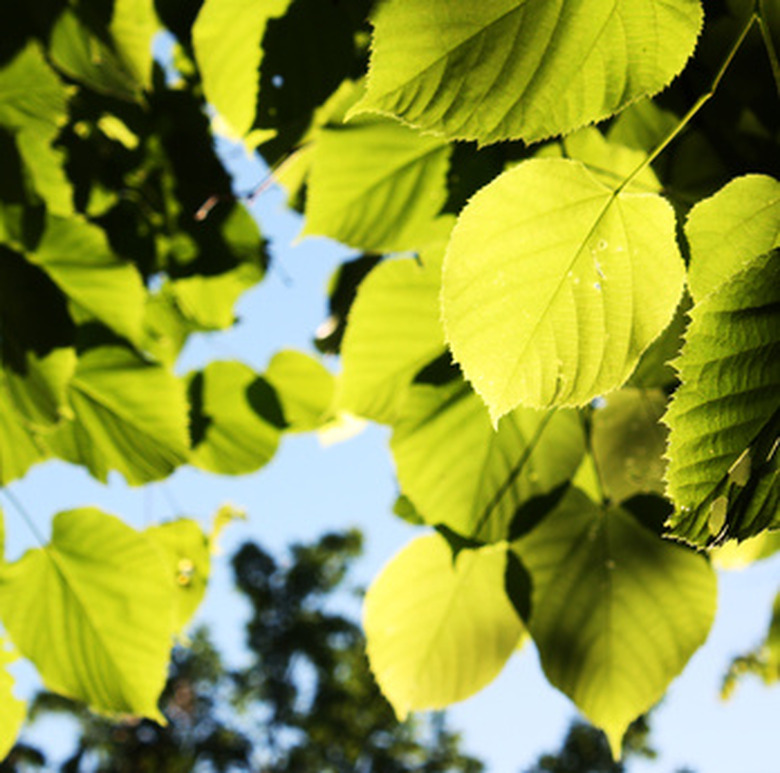Linden Tree Identification
Grown as specimen lawn trees, shade or street trees, lindens (Tilia spp.) are among the most favored deciduous trees for landscapes in North America, Asia and Europe. Appreciating moist, fertile soils that drain well, they often create suckering shoots from their trunks or surface roots to form thickets. The flowers provide abundant nectar to honeybees for a distinctly flavored, deep rust-amber colored honey.
Tree Habit
Linden trees, regardless of species or hybrid origins, develop a broad and rounded or column-like shape. A young linden usually displays a uniform, pyramid-like shape. From burrs on the trunk or base of the trunk may arise shoots of twigs called suckers. Collectively, these suckers create thickets of vegetation around the linden tree's base. The suckers will be pruned annually in formal gardens, but pruning scars or twig stumps will remain.
- Grown as specimen lawn trees, shade or street trees, lindens (Tilia spp.)
- Appreciating moist, fertile soils that drain well, they often create suckering shoots from their trunks or surface roots to form thickets.
Leaves
Leaves of lindens are arranged alternately on the branches and youngest twigs. The leaf blade is rounded or oval overall and forms a tapering tip. The base of the leaf looks like a heart. Edges of leaves bear teeth or shallow lobes. Depending on the species, leaves range from two to eight inches in length or width and are larger on young saplings.
Flowers
From late spring to midsummer, linden trees produce fragrant flowers. Colored ivory to green-yellow, they do not create an ornamental effect since they are so small. Along the youngest twigs from the base of leaves, long, thin stalks emerge with a large, narrow bract or modified leaf. At the end of the stalk grows a cluster of small, cup-shaped flowers that typically are visited fervently by bees.
- Leaves of lindens are arranged alternately on the branches and youngest twigs.
Fruits
After pollination, the flowers develop into oval, pea-size fruits called nutlets. They first look soft green but ripen to more olive-green or green-beige. They linger on the tree until late summer or early fall before dropping to the ground.
Winter Identification
When lindens are dormant in winter and lack any leaf, flower or fruit to help in identification from other trees, clues from the bark and buds can help. Look at the youngest twigs. Linden trees will reveal alternately arranged buds that lack any spines and have at least one scale. A twig lacks a definite bud at the end, although a bud may lie just to the side of the tip of the twig. At the base of each bud is a leaf scar from last year's leaf. A close examination shows a group of three rounded vascular scars. Also note that the bud on the twig is lopsided, as if pushed off of the twig or partially jutting out.
- After pollination, the flowers develop into oval, pea-size fruits called nutlets.
- When lindens are dormant in winter and lack any leaf, flower or fruit to help in identification from other trees, clues from the bark and buds can help.
References
- Malvaceae Info: The Tilieae Pages
- "A-Z Encyclopedia of Garden Plants;" Editors Christopher Bricknell and H. Marc Cathey; 2004
